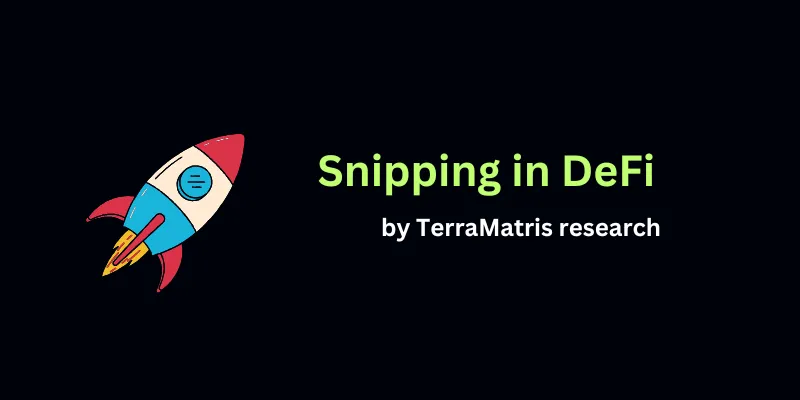At Terramatris, we constantly evaluate emerging strategies in the decentralized finance (DeFi) landscape — especially those that promise asymmetric upside. One such tactic is snipping (or sniping), a method that’s gained attention for its high-speed, high-risk approach to token trading.
We want to offer a clear and honest take: while snipping can be entertaining and, in rare cases, wildly profitable, it doesn’t align with our long-term trading philosophy.
What Is Snipping in DeFi?
Snipping refers to the practice of purchasing newly launched tokens at the exact moment liquidity is added to decentralized exchanges (DEXs) like Uniswap or Raydium. Traders — typically using bots — aim to front-run others by getting in before a price surge and exiting moments later with a quick profit.
Snipping usually involves:
- Monitoring new token pair creations.
- Using bots or scripts to submit early, pre-signed transactions.
- Bidding higher gas prices to outpace competitors.
Our Exploration: Interesting, but Not Convincing
To be clear — we have not run any snipping bots ourselves, nor have we deployed capital into active sniping strategies.
However, we’ve explored several publicly available bots, platforms, and tactics. We’ve analyzed codebases, reviewed community feedback, and simulated edge-case scenarios.
Our conclusion?
It’s more fun than it is sustainable.
Snipping appears built for adrenaline, not for stable growth. The field is littered with failed attempts, honeypots, blacklisted contracts, and high gas loss ratios.
It’s difficult to repeat. Impossible to scale. And often too dangerous to justify.
Raydium, Solana & Our Token
Our own Terramatris Token (TERRAM) is live on the Solana blockchain, and available for trading on the Raydium Automated Market Maker (AMM).
Raydium has recently gained significant popularity as the go-to platform for launching new Solana-based tokens — largely because of ultra-low transaction fees and a frictionless developer experience. These advantages have also made Raydium a hotspot for sniping bots, especially during new token launches.
Why We’re Not Betting on It
While we don’t discount the possibility that some early snipers made big returns — especially in the initial DeFi waves — we see too many red flags to consider it a long-term, fund-worthy strategy.
Key Risks We Identified:
- Bot saturation: Millisecond-level races lead to heavy failure rates.
- Anti-bot protections: Contract-level blacklists and honeypots are now common.
- MEV and sandwich attacks: Snipers often become prey to more sophisticated bots.
- Gas loss risk: Even with Solana’s cheap fees, failed transactions can stack up.
- Lack of compounding potential: There’s no reinvestment path or yield growth.
Our Focus at Terramatris
We build the fund around repeatable, risk-adjusted, and scalable strategies.
Our core areas include:
- Directional Trading: Long and short exposure to top crypto assets based on macro signals, trend shifts, and volatility regimes.
- Options-Based Yield:
- Selling cash-secured puts to acquire assets at discounts.
- Writing covered calls to generate income against spot holdings.
- Capital-Efficient Management: Managing margin, risk, and opportunity cost is central to our execution model.
We’re not looking to “get lucky” — we’re here to compound strategically.
Final Word
Snipping in DeFi is flashy. It’s technical. It can be fun. But from our perspective — as traders aiming for consistency, not chaos — it doesn’t pass the sustainability test.
We’re not entirely dismissing it. There may be niche opportunities for those with custom infrastructure, deep code understanding, and fast relayer access. And yes, some early adopters did make it big.
But for us at Terramatris, this isn’t a strategy we stake capital on.
We’d rather play the long game — with options, structure, and discipline.
